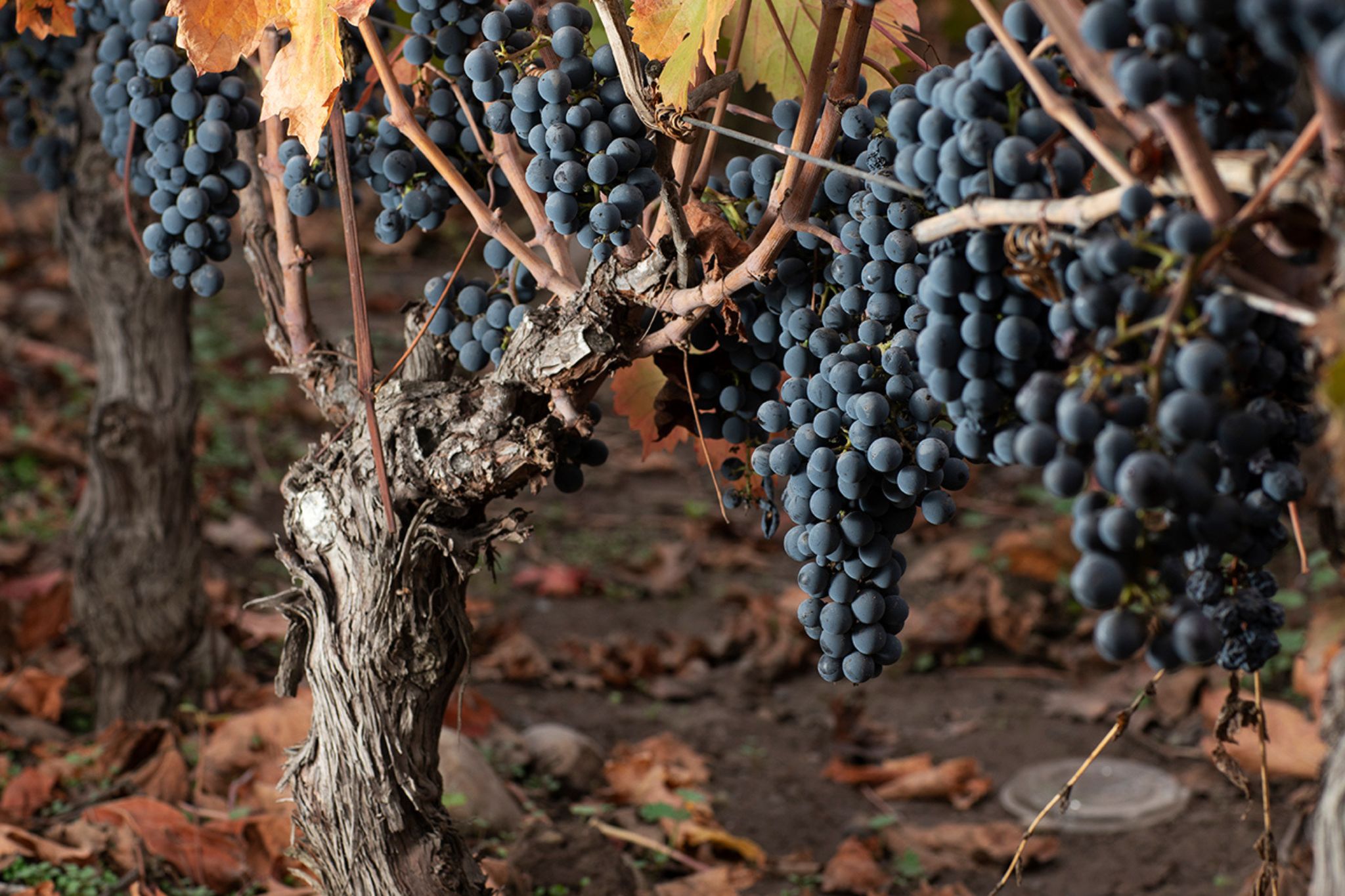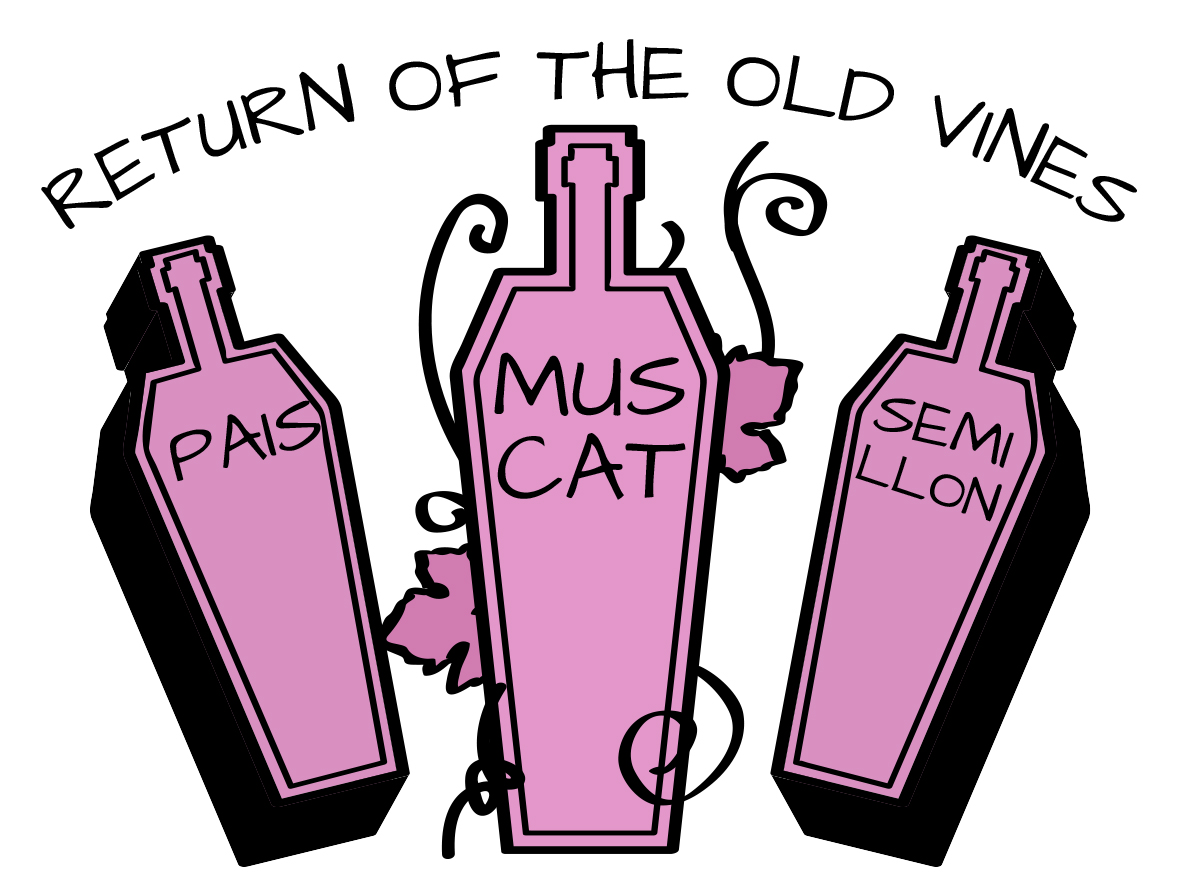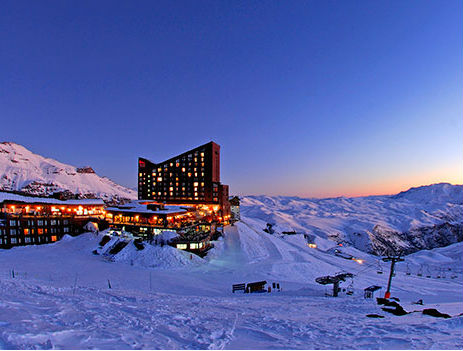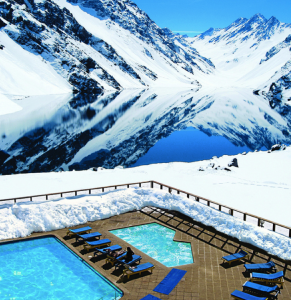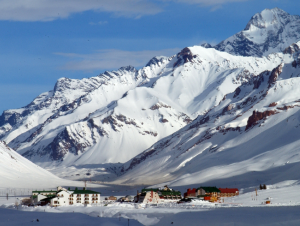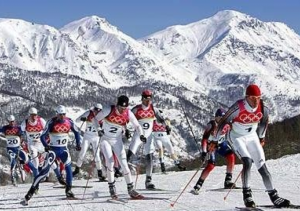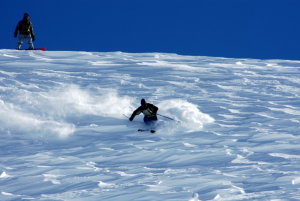A guide to making wine from biodynamic vineyards. Want to know why cow horns, radishes and quartz are important to make great wine? It is not as crazy as it might sound. Wine writer Amanda Barnes and Chilean winemaker Julio Bastias from Matetic walk through the vineyard and preparations used to make great wine from biodynamic vines.
Squeeze
The ultimate guide to Carmenère
Carmenère is a well-travelled French variety that found its second home in Chile where it is now so widely grown that Chile is the world’s top producer of the variety, making 98% of it!
While it adapted to Chile very well, it was under the guise of a different variety – Merlot – that Chilean wine producers planted and produced it. The slightly different style that this Merlot in Chile produced from the Merlot found in other parts of the world led Chilean winemakers and drinkers to call it ‘Merlot Chileno’ as opposed to just plain old Merlot. This was indeed very different from any other Merlot because, as the intrepid French ampelographer Jean Michel Boursiquot discovered in 1994, it was, in fact, the long-lost French variety, Carmenère. He spotted the error because Carmenère has distinctive twisted stamens (unlike Merlot and most other grape varieties).
Since 1994, not only the name of the variety changed but viticulturists and winemakers began working the variety in a different way and the style changed. The separation of varieties also changed the style of Chilean Merlot, although if you find a pre-1994 bottle of Merlot, it could likely be Carmenère.
Both Chile and Argentina are seeing an exciting rediscovery of old vines – and old varieties – that are proving some excellent wines worth seeking out. With the rise of Cabernet Sauvignon, Chardonnay, and even Malbec, in both countries the umbilical cord was almost cut from some of the original varieties to be planted in South America, but now we are seeing a return to these roots and the results are delicious.
Here’s a selection of five to get your mouth watering:
Pais (Chile)
It is perhaps a delightful irony that Chile’s Pais grape, which translates as country in english, is leading the nation’s return to their deepest rooted heritage in winemaking. Also known as Criolla in Argentina, and the mission grape in the US, Pais was one of the first grapes to be brought to Chile when the Spanish conquistadors landed and began producing wine in the 16th century. It was one of the most widely planted grape varieties in all of Chile until the vinicultural french revolution took place a couple hundred years later.
Floundering below the line of recognition for centuries, Pais was condemned to cheap table wine. However in the last couple years, winemakers and viticulturists in Chile have rediscovered this variety and brought about with it a return to ancestral winemaking techniques. Pais vines planted in Maule, Itata and Bio Bio can date back well over 200 years in age, and the quality of these old vines, which are now dry harvested, has re-enchanted winemakers across the country.
At the heart of the Pais wine movement are ancestral winemaking techniques, which in more fashionable terminology would be considered ‘natural winemaking’. With minimal intervention in the winery (or often garage), organic and dry-harvested old vines, these wines are usually small production and available in the local market or specialist natural wine merchants. Funky, earthy and often surprising, they show the old vine concentration of Pais, but also rustic fruit flavours and sometimes floral notes.
There are also many fresher, beaujolais nouveau-style carbonic maceration Pais wine with elevating aromatics and a fresh mouthfeel, as well as a handful of light and delicate sparkling wines made from Pais. Whichever your fancy, I recommend you take a wander into Chile’s oldest variety for the sake of curiosity, and hopefully pleasure.
Bonarda (Argentina)
If Pais was the most-planted red variety in Chile, Argentina’s equivalent would be Bonarda. Before the Malbec boom in the mid 90s, Bonarda was the most widely-planted red grape and suffered a similar historical treatment as Pais: downgraded to table wine and abandoned as it lost out on the fashion stakes.
Bonarda is back on the rise now though. Historically pipped as Malbec’s little brother, it was often seen as an alternative to Malbec, and vinified in the same way. In recent years winemakers have started to treat this variety differently, and more tenderly, with shorter maceration periods and some whole cluster carbonic maceration. There are a handful of much lighter, fruitier Bonarda wines that are perfect to enjoy chilled over lunch or on a Summer’s evening. The rise in light sparkling pink wines coming from the variety is also something to cast your eye on.
While most Bonarda is still shunned to the hotter, and more historical, wine regions in San Juan and the East of Mendoza, you’ll find a few new plantations popping up on prime vine-estate in the highlands of the Uco Valley, which proves just how seriously winemakers are once again taking the variety. You might have heard of Bonarda many times before, but it is worth revisiting to discover some of the newer interpretations of this older variety that acted as a building block to Argentine red wine today.
Carignan (Chile)
The more handsome sidekick of Pais, Carignan was a show-stealer back when it was first planted and is still hogging the limelight. Originally planted in Chile in order to give a bit more backbone and colour to the readily-planted Pais variety (see above), it is still arguably a grade above Chilean Pais. Planted in the same areas as Pais in southern Chile, Carignan also benefits from deep roots and old vines.
Carignan (or Cariñena in Spain) shares some of the ripe red fruit characteristics and floral nose found in European plantations, but its wild acidity and grippy tannins are somewhat tamed by a century of growth under the warm Chilean sun.
There are many Carignan wines from Chile worth trying, but perhaps the most authentic (and easily recognisable) are the VIGNO wines. In case you haven’t already been treated to a VIGNO tasting, it would be most easily summed up as Chile’s first real wine appellation. VIGNO stands for Vignadores de Carignan, and the association is made up of 18 (and counting) producers who make a wine from at least 65% Carignan, from old vines (30 years+) in Maule that are dry irrigated, goblet-trained and have been aged at least 24 months in bottle or barrel. That doesn’t mean all the VIGNO wines are similar, in fact they show quite the opposite: the great individuality and character that Chile’s old Carignan vines have developed after hundreds of years of abandonment.
Semillon (Chile & Argentina)
A stalwart of the Bordeaux blanc scene, in South America Semillon has been positively stalled for the last century – until now. At one stage the most widely-planted white variety in both countries, Semillon has plenty of roots buried either side of the Andes but it is only in the last couple years that new Semillons are coming to surface in the wine scene.
Some producers are taking Semillon to extremes, creating taut wines with electric acidity; while others are working on the textured mouth feel and body that old vine Semillon boasts. Still only produced in very limited productions, it might be tricky to get your hands on at first but once you try the new Semillon wines coming from Chile and Argentina you’ll quickly get a thirst for this wonderful white rebirth.
Muscat/Moscatel (Chile & Argentina)
Not the most glamorous grape in the vine garden, Muscat has been the backbencher of most white blends and table wines in both countries (and many parts of the world) for as long as the vine’s history stretches. Moscatel de Alejandria is of course the mother grape to Argentina’s one native variety, Torrontes, but now mamá is coming out to play too…
From San Rafael and San Juan in Argentina, a couple natural Moscatel wines with explosively aromatic bouquets and bone-dry palates have emerged from old pergola vines. While in Chile, it is Itata that is the home to the Moscatel parade: dry farmed, goblet-trained old vines also produce interesting whites that are now form part of some of the most exciting white blends in the country. Watch out boys, momma’s back!
Update: Read our new guide to Semillon’s revival; the essential guide to Criolla grapes and check out our old vine register for South America.
You might more closely associate South America with tropical jungle and beaches, but the Andes in Chile and Argentina offer some top ski resorts that are ripe to discover. If you want to hit the powder, here is our guide to the best South American ski resorts in both Chile and Argentina:
Right on the cusp of Argentina, is El Portillo. The first ski resort established in South America, El Portillo is just 10 minutes from the border of Argentina tucked up high in the Andes – about 2 hours from Santiago. Well equipped with 34 pistes for skiers and snowboarders of all levels, as well as an outdoor heated swimming pool, yoga classes, a nightclub and a 3D cinema. The best time to visit for wine lovers though is during their well established Wine Week and Wine Fest for two weeks during August where every night during the week some of Chile’s top wineries are invited to warm up the crowd with some of their finest wines and a charm during two weeks in August.
The closest and most convenient though is Valle Nevado. After driving an hour and a half east from Santiago along a precipitous, serpentine road, the quasi-modernist Hotel Valle Nevado pops up over a rolling hill. It’s not an attractive building, and the stark contrast it creates with its high-altitude setting gives it the look of a moon-base. But Valle Nevado makes up for its architectural shortcomings with its high, snow-sure slopes, miles of intermediate terrain and broad, easy-to-access bowls for off-piste skiers. Intermediates and beginners can ski for miles without crossing their own track, and while experts may have to search around with a bit more effort than they would in Portillo — or even in neighboring La Parva — there’s still much fun to be had for the hardcore crowd. On the south-facing slopes above the hotel, advanced skiers can traverse to their right from the top of the Andes Express lift and ski a series of steep faces leading eventually down to a deep natural halfpipe called “La Garganta de Bruja,” or The Witch’s Throat by locals.
Only two and a half hours from Mendoza, what Los Penitentes lacks in size and glamour, it makes up for ten-fold in scenery and accessibility. Named after a row of monk-shaped peaks in the mountains, this tiny village could not be more conveniently located as it is literally bisected by the main road to Chile (165km west of Mendoza City). With a base altitude of 2580m rising to 3200m, these powdery slopes provide tremendous opportunities for all levels to downhill or cross-country ski and snowboard. The resort has a total of 28 runs, 11 of which have been approved by the International Ski Federation. All vary in difficulty, and stretch a total of 22 kilometers that cover around 300 hectares of mountainous slope. The best spot to stay here to take advantage of the snow is Hotel Ayelen, run by expat couple Steve and Mecha who will warm you up apres-ski with Malbec and whisky.
Next door is Los Puquios (Parque de Nieve), an unpretentious and family friendly ‘snow park’ with a large variety of other activities on offer. If you don’t want to ski or snowboard on their smaller runs but like to stay on your feet you can have a go at snow shoeing, which is basically trekking around the resort with shoes similar to tennis rackets on your feet, or you could try your hand at ice skating in the small outdoor ice rink. For those of us who quite like to use their bottom as a snow cushion there are a couple of fun options, and don’t trick yourself into thinking they are just for children. Try out the culi-patin (literal translation butt skating) for a surprising adrenaline rush throwing yourself down a large hill on slippery plastic sledges, or go ‘tubing’ and sit your derrier in a large inflatable rubber tyre as you slide down the slopes. There are also play areas for the rug rats to make snowmen and throw snowballs at each other, while the adults sit back with a beer or homemade rustic argentine food at the resto-bar nearby.
The original ski spot near Mendoza is Vallecitos – this is where Mendocino ski history began. It is the province’s oldest ski centre, nestled into the stunning Cordon de Plata mountain range at an altitude of 2,900m (rising to 3,200 for the highest run). 80km south west of Mendoza City and just 16km past Potrerillos, it is perfect for day trips or one night stays when there is a heavy fall of snow. (Note: It only opens on very snow heavy years.)
San Rafael and Uco Valley, Argentina
Las Leñas lies 445km south of Mendoza City in the heart of the Andes. This is the biggest, the best, and by far the most expensive of the resorts in the area. It attracts snow starved enthusiasts from the north who can´t bear the thought of a summer without snow, along with well-heeled Argentines who ski by day and party by night. Las Leñas has a total of 35 marked runs that cover a distance of about 64km, the highest of which reaches 3,430m. Of these runs, 30% are to be considered beginner, 25% intermediate, 20% black and another 25% double black. One run even includes the added spectacle of lights and music to accompany your ride. For those craving more adventure than a double-black can offer, there are said to be around 4,000 hectares of off-peak slope. Keep on eye on the forecast because if it starts snowing, staff close all but 2 lifts inciting dreadful hour-long lines at the base. The village at Las Leñas’ base contains modern luxury hotels, restaurants, casinos, nightclubs and of course a multilingual ski school. If you decide to stay in nearby Malargue (70km) you get a 50% discount on the lifts. Buses leave regularly from the Mendoza bus terminal, and from the Uco Valley you are only an hour away.
The southernmost slopes in the world, Cerro Castor is just 26km from Ushuaia and usually has guaranteed snow till October – which, considering the season started in June, makes it one of the longest ski season’s in Argentina. This area has become one of the favourite spots for European professionals who come here during their Summer for excellent off-piste skiing and no risk of the altitude sickness which can sometimes affect sportsmen in the higher Andes slopes. With 10 lifts and 28 trails, there is plenty of white stuff to explore and a snow park to keep you in training on your skis or snowboards. This is also a favourite spot for alpine skiing, cross-country skiing, sledding, dog sledding and snowshoes, and its fabulous location tucked between forests makes it picture perfect.
There is a ski lodge on site but you’ll have more fun staying in one of the many accommodation options in Ushuaia. The city is a year-round destination for wildlife spotting and getting that all-important passport stamp from ‘the end of the world’. Renowned for the fabulous centolla (king crab), other shellfish and rich Patagonian lamb, most après-ski action in Ushuaia involves eating and drinking while staying warm in the many restaurants. Other attractions are the museums, the train at the end of the world, and the spectacular Tierra del Fuego National Park. Whether you want to stay in the city or in one of the host of more luxury options on the hillsides surrounding the port, there are plenty of places to choose from: Arakur is the newest and flashiest hotel in Ushuaia with stunning bay views and an indoor-outdoor pool in the middle of a nature reserve; Los Caquenes Spa and Resort offers a handsome vantage point along the Beagle Channel and a well equipped spa as well as their own private boat for excursions into the Channel to visit the wildlife; and Cumbres del Martial offers quaint snow-surrounded cabins with a traditional and cosy English tea house right next to the glacier.
Bariloche, Argentina
With over 120kms of slopes, and 600 hectares to discover by ski, Cerro Catedral is one of the most established and extensive ski destinations here. There are 39 lifts to get you up to over 50 well-marked runs which cater for all types of skiers from newbies to advanced black run and off-piste fans. There is a kids club to keep the children entertained so the adults can go off and play, and there are schools and practice parks to hone your skills on the powder.
Just 20kms from Bariloche, most people stay in the popular mountain destination when visiting Cerro Catedral. Bariloche is famous for its beautiful lake district, homemade chocolate and artisanal brews. While the weather might be a bit windy for too much walking, you’ll certainly want to save some of your calf power for after the slopes to explore the many different treks that are accessible nearby the city. Another popular pastime here is fishing, which can be done as catch-and-release all year round.
If you are weary after the snow though, Bariloche is the ideal place for warming hot chocolates and a relaxing pint or two of home brews. The pretty city centre is easily walk-able and you can poke your head between the different chocolatiers, bars and restaurants with ease. Accommodation runs from simple hostels and B&Bs to the renowned luxury of Llao Llao Golf & Spa resort located in a perfect ambling spot on one of the lower mountains in the national park; the aptly named Charming resort close to downtown but with the luxury of private spas in each suite and a restaurant overlooking the lake; or get a flavour of estancia life at Peuma Hue luxury estancia with horse-riding and boat trips from their private estate only 30mins from the ski slopes.
If Portillo is the resort for somewhat wealthy off-piste adventurers, and Valle Nevado is for intermediates with a few experts mixed in, Nevados de Chillán is the realm of the young, the dreadlocked, the GoPro and neon ski pant wearing, those who rock ultra-wide skis with semi-pornographic top-sheets and don’t think twice about smoking in the lift line. Though less well known than its northern neighbors, Chillán is Chile’s largest ski area — and though it does have a few significant drawbacks for international travelers — it has a deserved cult reputation among the nation’s serious skiers.
Occupying the south side of an active volcano, Nevados de Chillán features one of a kind terrain, covered with cornices, natural half pipes, humpbacks and many short, but terrifyingly steep pitches. This isn’t to say that Chillán is only for experts. Beginners can ski a large, mellow area below tree line, serviced by two T-bars, a poma lift, a quad and a double. Because of Volcan Chillán Nuevo’s convex profile, the upper part of the mountain is a playground for intermediates, and the long, wandering Tres Marias run which snakes through stunted forests to the north of the main resort is a must-do.
There’s no denying, however, that off-piste is the main attraction. The proving-ground for advanced skiers in Chillán is the lower flank of Volcan Chillán Viejo, a manageable hike and traverse off the skiers’ left side of the Otto lift. In this amphitheater of narrow 45-degree couloirs, a fall will send you to the bottom in a hurry. On the opposite extremity of the resort, a short jaunt out-of-bounds will leave you in a beautiful, isolated valley called “Shangri-La” by locals. Don’t venture past the stone mountain hut, however, or you’ll be in for a long, heinous slog back to the base.
When conditions permit, a snow cat will take you to the summit of Volcan Chillán Nuevo, and a few deep gullies underneath the Wenche lift will lead to some excellent tree-skiing in hardwoods draped with a light, green moss called “Devil’s Beard.” But here’s the rub: conditions rarely do permit. Wind can wreak havoc upon Chillán’s lift system, and a relatively turbulent local weather pattern shuts down all but the lower parts of the mountain during much of July and early August. While Chillán receives far more snow than the resorts to the north, it also receives massive dumps of rain, even in midwinter.
The slopeside Hotel Nevados de Chillán offers a convenient, pampered and similarly quasi-futuristic atmosphere to its guest. Many, however, prefer to stay off-mountain in the nearby village of Las Trancas — a smattering of rustic hostels, cabins and hotels sprawled along the forested access road. Though the area lacks any central focus, the architecture is tasteful and the natural scenery compelling. And while the town is far from paradise for night-owls, there are a few hotspots during weekend evenings, including the popular Snow Pub.
